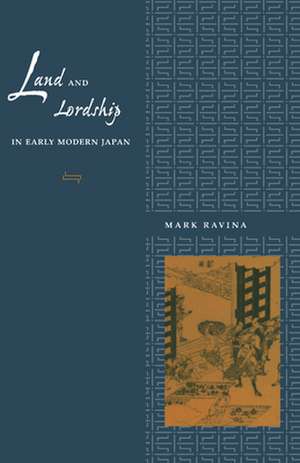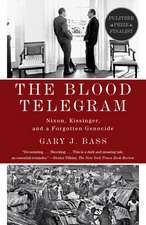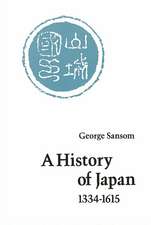Land and Lordship in Early Modern Japan
Autor Mark Ravinaen Limba Engleză Hardback – 31 iul 1999
Examining local politics in three Japanese domains (Yonezawa, Tokushima, and Hirosaki), this book shows how warlords (daimyo) and their samurai adapted the theory and practice of warrior rule to the peacetime challenges of demographic change and rapid economic growth in the mid-Tokugawa period.
The author has a dual purpose. The first is to examine the impact of shogunate/domain relations on warlord legitimacy. Although the shogunate had supreme power in foreign and military affairs, it left much of civil law in the hands of warlords. In this civil realm, Japan resembled a federal union (or “compound state”), with the warlords as semi-independent sovereigns, rather than a unified kingdom with the shogunate as sovereign. The warlords were thus both vassals of the shogun and independent lords. In the process of his analysis, the author puts forward a new theory of warlord legitimacy in order to explain the persistence of their autonomy in civil affairs.
The second purpose is to examine the quantitative dimension of warlord rule. Daimyo, the author argues, struggled against both economic and demographic pressures. It is in these struggles that domains manifested most clearly their autonomy, developing distinctive regional solutions to the problems of protoindustrialization and peasant depopulation. In formulating strategies to promote and control economic growth and to increase the peasant population, domains drew heavily on their claims to semisovereign authority and developed policies that anticipated practices of the Meiji state.
The author has a dual purpose. The first is to examine the impact of shogunate/domain relations on warlord legitimacy. Although the shogunate had supreme power in foreign and military affairs, it left much of civil law in the hands of warlords. In this civil realm, Japan resembled a federal union (or “compound state”), with the warlords as semi-independent sovereigns, rather than a unified kingdom with the shogunate as sovereign. The warlords were thus both vassals of the shogun and independent lords. In the process of his analysis, the author puts forward a new theory of warlord legitimacy in order to explain the persistence of their autonomy in civil affairs.
The second purpose is to examine the quantitative dimension of warlord rule. Daimyo, the author argues, struggled against both economic and demographic pressures. It is in these struggles that domains manifested most clearly their autonomy, developing distinctive regional solutions to the problems of protoindustrialization and peasant depopulation. In formulating strategies to promote and control economic growth and to increase the peasant population, domains drew heavily on their claims to semisovereign authority and developed policies that anticipated practices of the Meiji state.
Preț: 480.06 lei
Nou
Puncte Express: 720
Preț estimativ în valută:
91.91€ • 94.29$ • 77.39£
91.91€ • 94.29$ • 77.39£
Carte tipărită la comandă
Livrare economică 26 februarie-12 martie
Preluare comenzi: 021 569.72.76
Specificații
ISBN-13: 9780804728980
ISBN-10: 0804728984
Pagini: 304
Dimensiuni: 147 x 223 x 26 mm
Greutate: 0.54 kg
Ediția:1
Editura: MK – Stanford University Press
ISBN-10: 0804728984
Pagini: 304
Dimensiuni: 147 x 223 x 26 mm
Greutate: 0.54 kg
Ediția:1
Editura: MK – Stanford University Press
Recenzii
"This fine piece of distinctive and creative scholarship substantially enhances our understanding of Tokugawa Japan. Ravina redefines the early modern Japanese polity in terms which enable better comparisons with European states in their transitions to unitary states in the nineteenth century. The book will stimulate considerable discussion, both for the idea of the 'compound state' it advances and for its new approach to the interpretation of the Meiji restoration." —William B. Hauser,University of Rochester
Notă biografică
Mark Ravina is Associate Professor of History at Emory University.
Textul de pe ultima copertă
“This fine piece of distinctive and creative scholarship substantially enhances our understanding of Tokugawa Japan. Ravina redefines the early modern Japanese polity in terms which enable better comparisons with European states in their transitions to unitary states in the nineteenth century. The book will stimulate considerable discussion, both for the idea of the ‘compound state’ it advances and for its new approach to the interpretation of the Meiji restoration.” —William B. Hauser,University of Rochester
Descriere
Examining local politics in three Japanese domains (Yonezawa, Tokushima, and Hirosaki), this book shows how warlords adapted the theory and practice of warrior rule to the peacetime challenges of demographic change and rapid economic growth in the mid-Tokugawa period.












